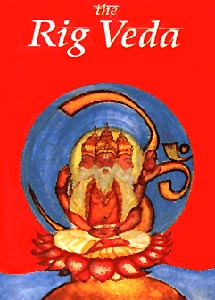 The hymns of the Rig Veda are a proof of the religion of the Aryans. The Rig Veda consists of 1,028 hymns which are addressed to various gods. They are chanted during sacrifices. The Vedic hymns frequently mention horses which did had no existence in the Indus cities. However, the lion has been motioned in the hymns. All this indicates influences apart from that of the Harappan civilization. The hymns were composed and sang by priests and sages who consider themselves as Aryans who entered the Indian soils when the Harappan civilization had declined. When they had settled in Punjab their seers began to compose many hymns that were collected in the Rig Veda.
The hymns of the Rig Veda are a proof of the religion of the Aryans. The Rig Veda consists of 1,028 hymns which are addressed to various gods. They are chanted during sacrifices. The Vedic hymns frequently mention horses which did had no existence in the Indus cities. However, the lion has been motioned in the hymns. All this indicates influences apart from that of the Harappan civilization. The hymns were composed and sang by priests and sages who consider themselves as Aryans who entered the Indian soils when the Harappan civilization had declined. When they had settled in Punjab their seers began to compose many hymns that were collected in the Rig Veda.
The hymns were written in praise of Lord Indra, god of war and weather, followed by Lord Agni, the fire god. There are also scattered hymns in praise of the Sun god. One or two hymns are there which are used while performing funeral rites. The Aryans were nomads and semi nomads with an advanced technology, sacrificial religion and a class of priestly seers who were the mentors of the tribesmen. There are hymns which are addressed to a pantheon of gods. Most of the gods were linked to heaven, light and fire. Each of the gods had a specific function. The gods followed the cosmic order and the regular course of nature. It is surprising that the Aryans who lacked an unorganized kingdom should have conceived of Lord Varuna. However, Indra was the most popular god.
Again Lord Agni had also an important place in the religion of Aryans. Through Agni the sacrificial offerings are brought to the gods and he serves as an intermediary between gods and men. Every Aryan family has its domestic Agni in the family hearth fire. Agni is hidden in the dark rain cloud and flashes forth as lightning. It blazes in the fire of the sacrifice.
The universe for the Aryans was simple. At the top was heaven where along with the planets resided the souls of the dead. Heaven was divided from earth. Earth was flat and a subterranean realm lied below it containing the spirits of the unrighteous dead. The religious life of the Aryans is barely hinted in the Rig-veda. However the Atharva-veda compiled much later contains spells of a religious magical type and refers to deities which have not been mentioned in the Rig-veda. From this one can infer that the Aryans had revered many gods who had lesser functions as compared to other greater Gods. These Gods were worshipped in their daily rituals which did not require the intervention of the priests.
The rites of Aryans have been mentioned in some of the hymns of the Rig Veda. According to a wedding hymn the Aryan ritual of marriage was a solemn religious ceremony that involves circumambulation of sacred fire. This sacred fire was later used to light the hearth fire of the newly married couple and various other rituals intended to link husband and wife in order to insure their health and prosperity. Sacrifices were one of the major features of the religious life of the Aryans.
A dead body would be cremated as followed among the Hindus. However other funerals have been suggested. There is a possibility that only the rich were cremated. There is no reference to the ceremony of Shradh.
The religion of the Aryans was oriented towards a simple and prosperous life.



















